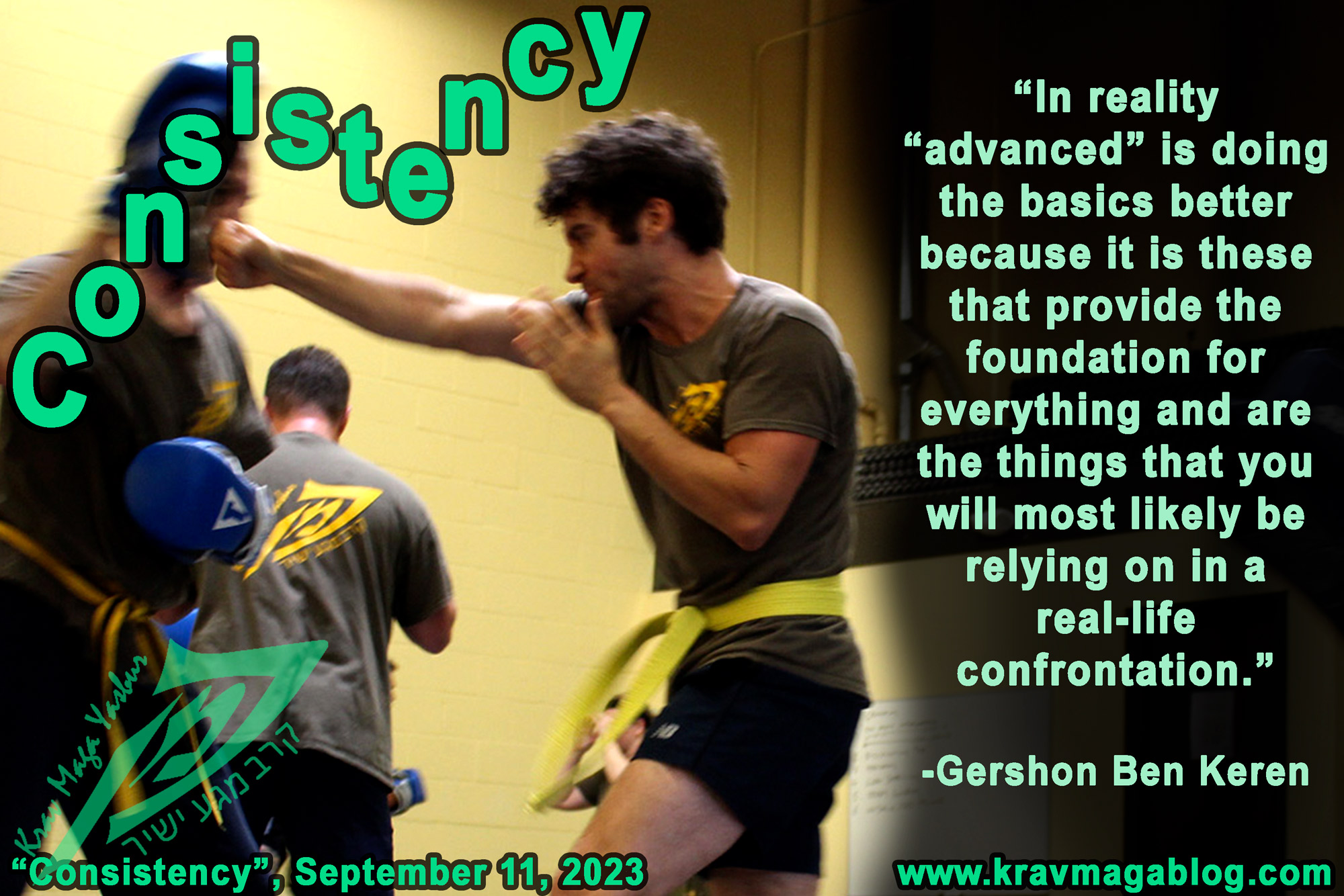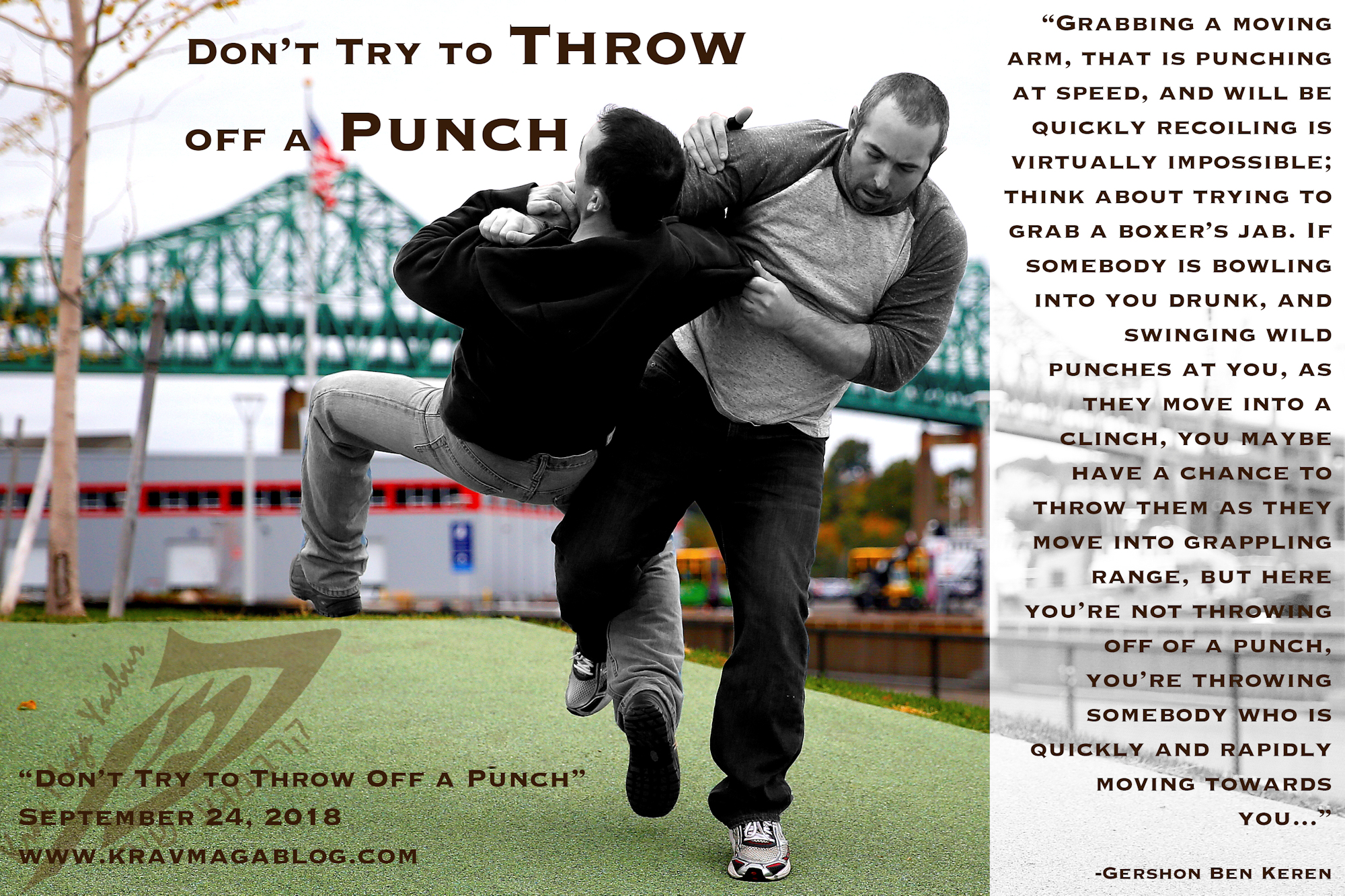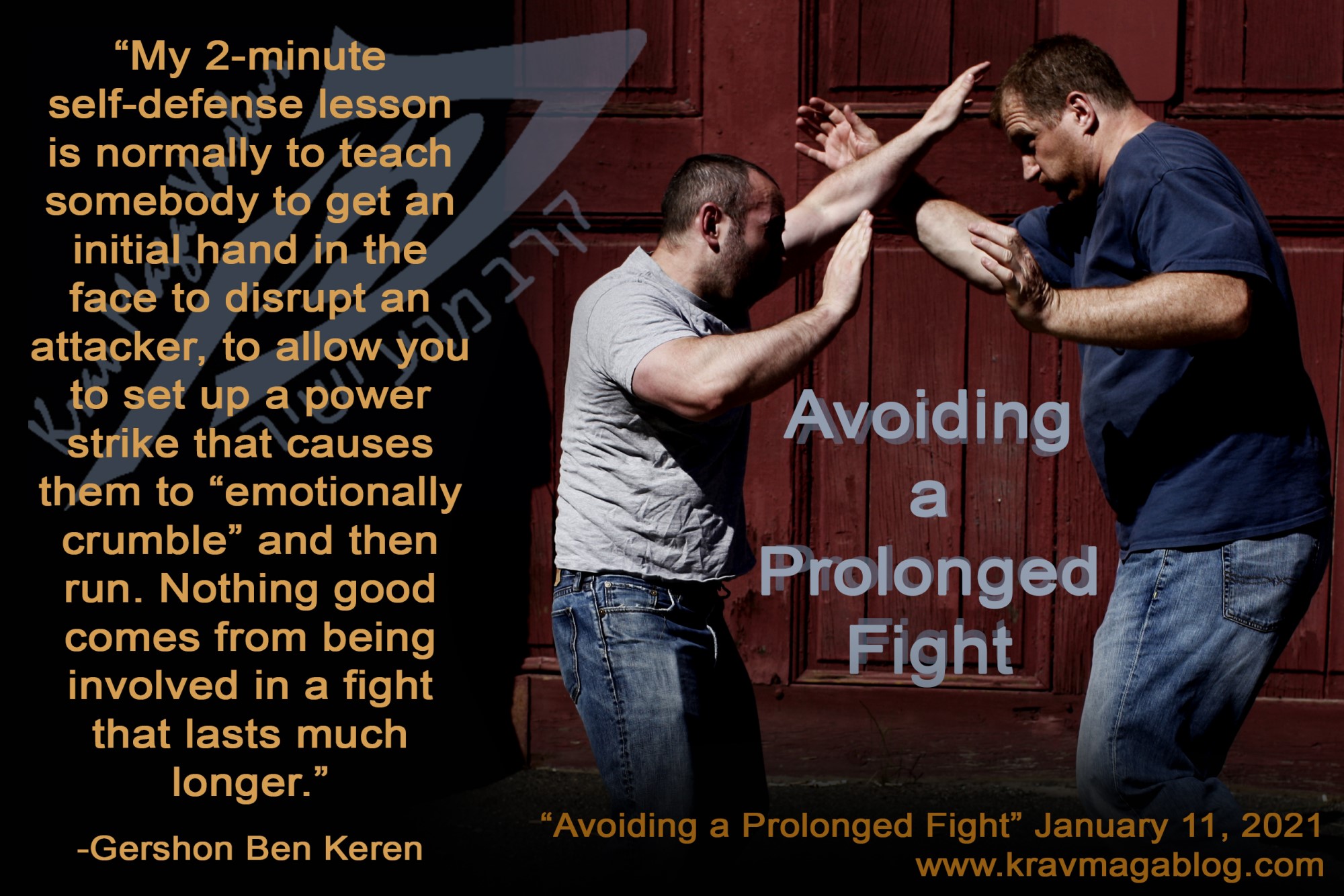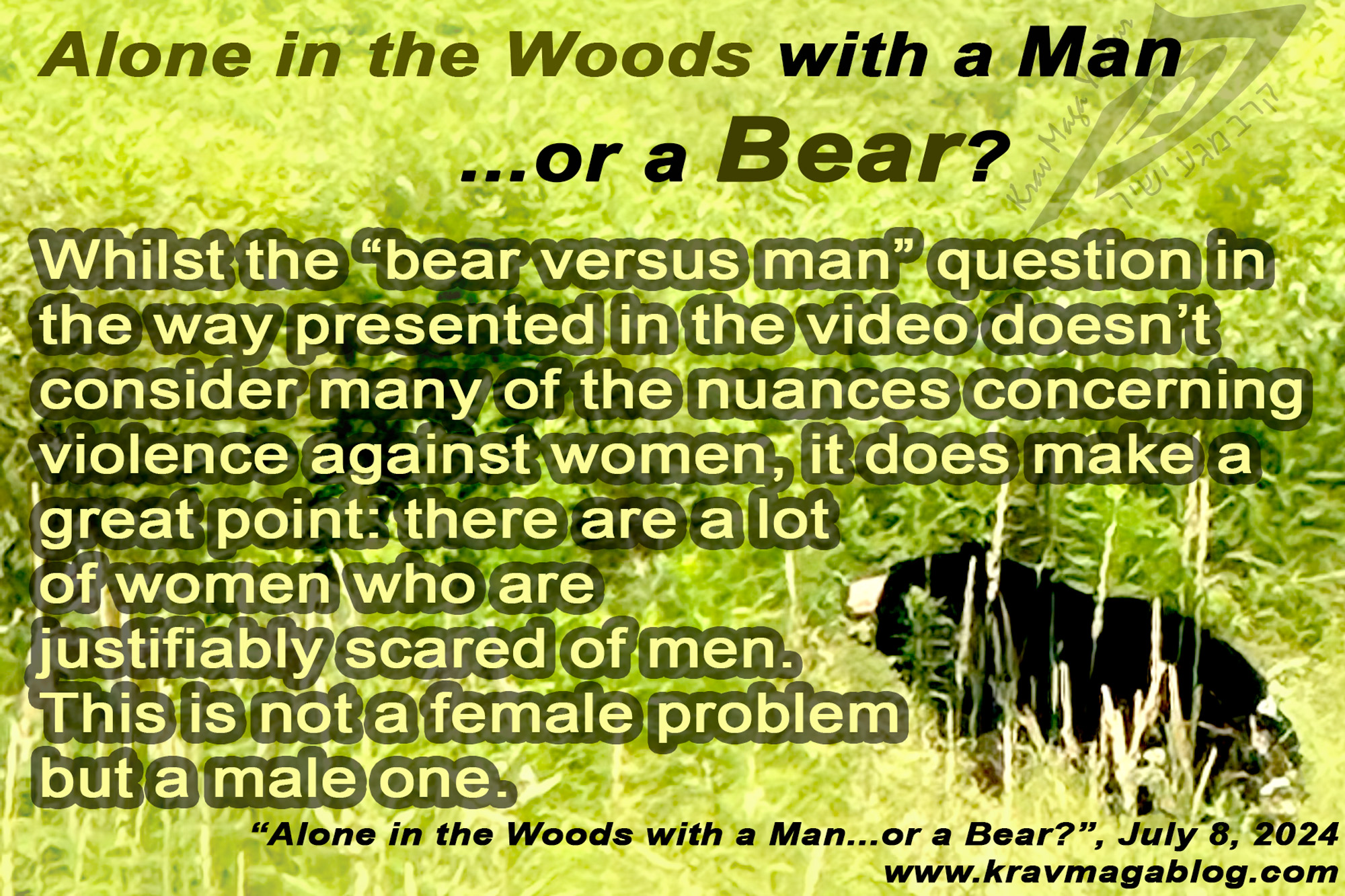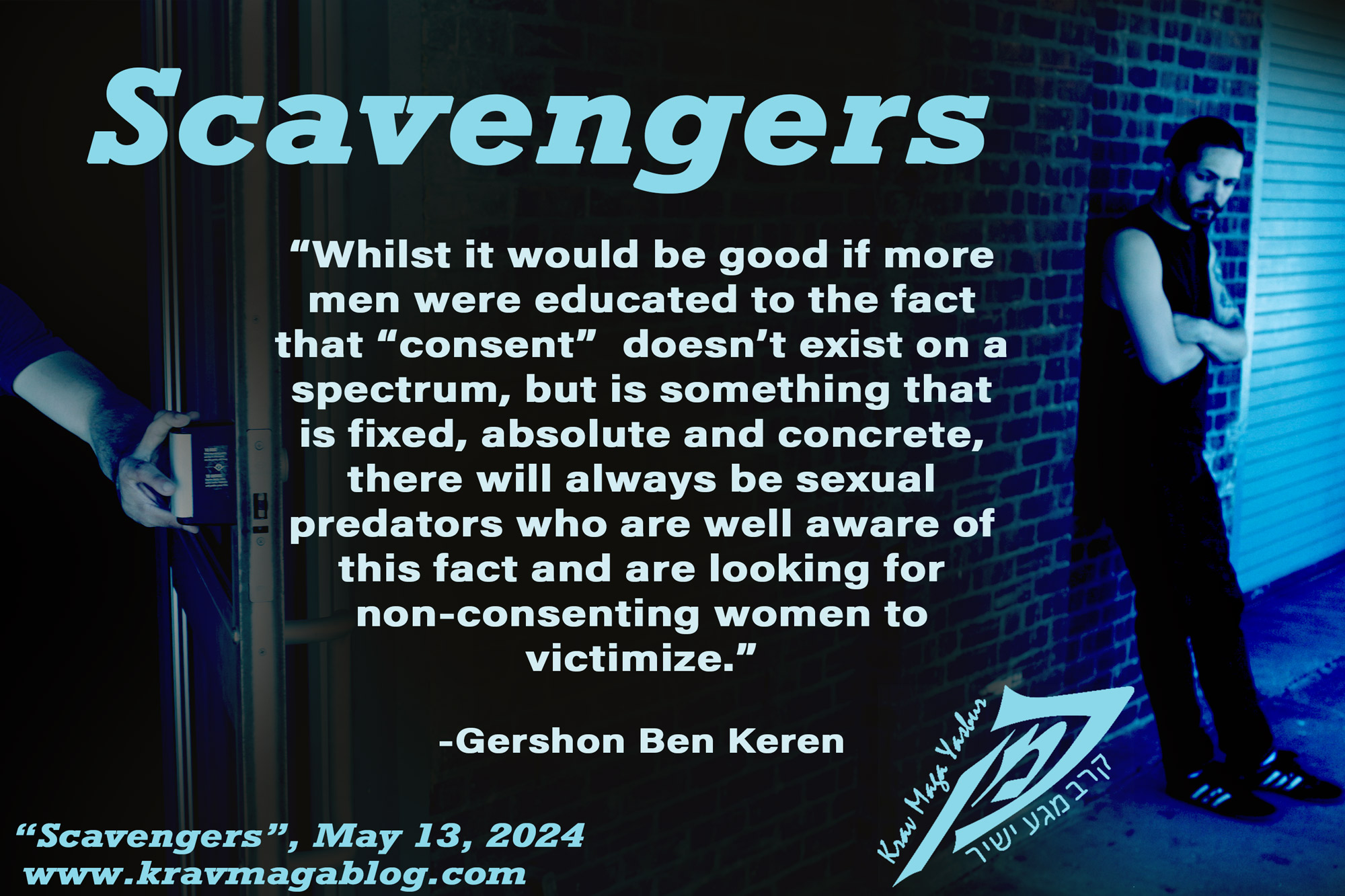Avoiding A Prolonged Fight, is an article written by Gershon Ben Keren, a 5th Degree Black Belt in Krav Maga, who teaches Krav Maga in Boston, MA. He has also authored three Amazon best-Selling Books on Krav Maga.
I’m a big believer in ending any violent incident quickly – that can be disengaging at the earliest opportunity; situations don’t always have to end with an unconscious aggressor, or one so injured/beat up that they can’t physically continue, etc. This also doesn’t mean, that I believe in “finishing” people when there is an opportunity to safely disengage; there is an extremely limited number of occasions when it is legally justifiable to stomp on somebody’s head, after they’ve been thrown/fallen to the ground, etc. If they’re not an imminent threat, and you have an opportunity to go, you should take it, “finishing” it by kicking them whilst they are in this position, is no longer about survival, but about ego and punishment – and if you come at self-defense from this perspective, you’re probably forfeiting any claim of self-defense that you try to make. In saying this, prolonged fights hold many dangers, and if you lack commitment in either your engagement or disengagement, you open yourself up to them.
If you aren’t prepared to finish the fight on your terms, it will be finished on your aggressor’s, and you and they probably don’t know what those terms are. If your terms are to keep fighting until you can safely disengage, you know the point at which you’ll end the fight i.e., when you can safely disengage. However, you don’t know if the person you are dealing with has a defined outcome in mind that will alert them to when it is time to stop fighting e.g., they may continue to stomp on your head as you lay there unconscious, until they run out of energy – and I’ve seen people continue to punish and harm/injure unconscious people because they don’t know how to end the fight. Unlike most animals/creatures, we aren’t programmed to recognize signs of when a confrontation is over. Most species, have actions/behaviors that signal when a fight/conflict should end e.g., male chimpanzees will hold out their hand, or adopt a female’s sexual position to signal submission, wolves will lie on their backs and show their throats to signal their vulnerability, other animals may urinate and behave in other ways that are reminiscent of very young animals etc. Humans lack such ritualistic signals. During this phase in our evolution when these “scripts” were being “hard-wired”, we were in our pre-tool building/using phase, and lacked the natural weapons, such as a strong jaw, and/or powerful limbs that could cause serious physical damage to each other e.g., we weren’t wearing footwear with a hard sole/heel, that could inflict serious damage on another person’s head. It is safer for all parties, if you finish the fight on your terms i.e., less potential injuries all round.
The longer a fight goes on, the more likely third parties will get involved and/or a weapon will get pulled and used. One of the worst stabbings I saw, was carried out by a young university student, who must have pumped his blade into his aggressor’s abdomen, 10-20 times in as many seconds; miraculously the guy survived. The fight had broken out in the bathroom of a club I was working in, and had been going on for several minutes, as they guy who was eventually stabbed had wanted to teach the student a lesson – that they should only come to the club when it was student’s night, and not when it was one of the evenings when the locals came to the club; the City was one where the presence of the University, and the university’s students (of which I was one) was largely resented. It had taken the student several minutes of either deciding to use his knife, or finding he had an opportunity to do so, coupled with the realization that his aggressor wasn’t going to just stop the beating. Prolonging the fight, gives the other party the time/opportunity to use a weapon, and also the justification to do so. The same is true of multiple assailants. I have also seen bystanders join fights, when they believe that the other parties are exhausted and in no fit state to really fight back, during prolonged encounters, especially when somebody ends up on the ground and there is little/no consequence for them doing so. If you can finish a fight quickly and disengage you won’t find yourself in such scenarios.
The longer a fight goes on the more likely you are to find yourself on the ground, because you’ve lost your footing, having slipped/tripped, or ended up in a grappling situation that went to ground. Whilst I’m a big fan of ground-fighting in a rules-based context, hitting the concrete in a real-life encounter is not somewhere you want to find yourself – as it usually involves you having to deal with aggressor(s) who have the advantage of remaining standing; and standing is an advantage as from this position you can choose when you disengage without having to first get to your feet etc. I’m not someone who says you should never go to the ground, however remaining on your feet gives you more options, and makes you less vulnerable than when you are on the ground e.g. I’d rather be standing than having somebody repeatedly slamming a chair, or other object, down on me. We should all be able to work and operate on the ground, but at the same time recognize it’s not a great place to be, especially when it involves weapons and multiple attackers etc.
Train a good punch/strike that can deliver enough force, to cause enough pain, that you create a reaction/response in your aggressor that allows you to disengage and end the fight there. I understand that this presents a simplistic approach to dealing with violence, but sometimes it is worth aiming high, and simply. Don’t rely solely on this but have it as a good starting point. My 2-minute self-defense lesson is normally to teach somebody to get an initial hand in the face to disrupt an attacker, to allow you to set up a power strike that causes them to “emotionally crumble” and then run. Nothing good comes from being involved in a fight that lasts much longer.
0 COMMENTS

